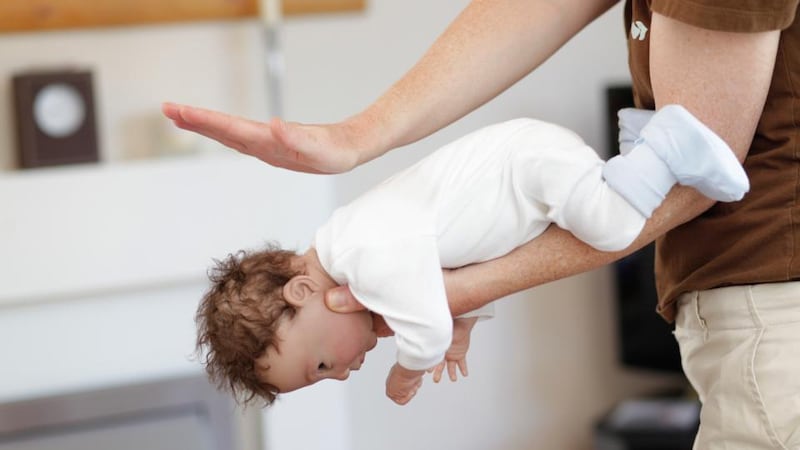Like many parents, one of my greatest fears is of one of my children choking. With three smallies under five at home, I’ve had my fair share of minor scares. However, a recent incident involving my accident-prone three year old was far too close for comfort when he almost choked on a 20-cent coin.
Fortunately, the coin came back up (along with his dinner) after what felt like an eternity, but it was only about 60 seconds and the emergency had passed.
However, it struck me later that despite having completed a first-aid course many years ago and being as vigilant as I could about choking hazards – cutting food into small pieces, cutting sausages lengthways, never giving my kids peanuts or popcorn and trying to teach them not to put small objects in their mouths – when my child started to choke before my eyes, fear and adrenalin took over. Apart from thumping him on the back in a complete panic, I would not really have known what to do next if he had not brought the coin back up himself.

I immediately resolved to follow up on an ad I had seen in my local supermarket, offering basic first-aid classes for parents and childminders. The following day, I had signed up for the next course with a qualified midwife, nurse, first aid instructor and mum of three, Anne Canty.
The 2½-hour course, which took place in Canty’s rural home near Mallow, Co Cork, focused solely on the first aid needs of children. There were six of us in the class: three parents and three au pairs who were sent by the parents of the children for whom they cared.
Basic first-aid skills
Canty began by explaining that most accidents happen at home and can be prevented by proper childproofing and keeping a close eye on children at all times. However, with basic first-aid skills, there is a lot you can do to help your child in the event of an accident or injury.
She ran through the most common causes of injury to children, which include falls – usually from a raised surface like a high chair or kitchen table – burns, poisoning, drowning and choking. We learned that the majority of children are burned by hot drinks and that hot liquid can keep burning through a child’s delicate skin for 10-15 minutes after it hits the skin. This is why it is vital to keep the site of the burn under cold running water for 15 minutes – which is not easy with a screaming child.
The number one cause of unintentional poisoning in children is the ingestion of dishwasher tablets, but common sources of poisoning can be found in places other than the obvious places such as the cupboard under the sink.
Danger lurks everywhere, we learned. In a handbag (headache tablets, perfume, the Pill); bedside lockers (medication, deodorant, nail-polish remover, which kids like to drink despite the strong smell); glove compartments and grandparents’ bathrooms (medication and denture-cleaning tablets which kids, inexplicably like to lick), to list just some.
While Canty went through all the recommendations for various emergency situations from burns and broken bones to choking and, importantly, CPR training, she pointed out that parents had to assess each situation themselves and use their common sense.
What to watch for
“Most children are fine after a bump to the head, for example,” she said. “However, it’s important to know what to watch out for just in case a child is concussed and whether you need to take him to the doctor or call 999 or 112.
“If you think your child has eaten something like a box of Panadol, you need to take them to your nearest emergency department or GP and take the box with you. On the other hand, if they have sucked on a plug-in air freshener, you could ring the Poisons Information Centre helpline for advice.”
While we were all somewhat alarmed to discover the sheer scale of the dangers our homes present to our children, there is great reassurance in having the practical skills to know what to do in a wide variety of emergency situations.
When my three year old started to choke on a piece of breadstick last week, I knew exactly what to do and I didn’t panic. A few firm slaps on the back and, thankfully, the piece of food popped out.
A course of this kind should be recommended for every parent of a new baby.
Common childhood emergencies: How to deal with them
Choking If your infant (under one) is choking: Turn the infant face down with his head lower than his body. Support his head, jaw and neck. Give five back blows using the heel of your hand between the infant's shoulders. Turn the infant on to his back while still supporting his head and neck.
Give five chest thrusts by placing two fingers over the lower half of the infant’s breastbone, below an imaginary line between the nipples.
Keep doing five back blows and five chest thrusts until the object pops out and the infant begins to breathe unaided. If the infant becomes unresponsive, call for help and send somebody to dial 999 or 112.
Stay on the phone and listen carefully for advice. You must start CPR immediately (see below): the emergency operator will guide you.
If your child (over one-year-old) is choking Ask the child, “Are you choking? Can you breathe?” If the child cannot breathe, talk or cough, stand behind him. Give up to five slaps to the back between the shoulder blades.
If this does not dislodge the object, stand or kneel behind the child. Start the Heimlich manoeuvre by placing the flat thumb side of your fist between the child's navel and breastbone.
Wrap your hand around your fist and press upwards towards their stomach. Keep doing this until the object pops out and the child begins to breathe again.
If the child becomes unresponsive, gently lower him to the floor. Call for help and send somebody to dial 999 or 112. Stay on the phone and listen carefully for advice. You must start CPR immediately (see below): the emergency operator will guide you.
CPR Knowing how to do CPR properly could save your child's life in the case of an emergency. CPR, or cardio-pulmonary resuscitation, is a combination of rescue breaths and chest compressions to keep blood and oxygen circulating in the body. The HSE website is a valuable source of information on how to practice infant and child CPR. See iti.ms/1lzfvWS
However, there really is no substitute for putting aside the time to take an infant and child CPR course to learn the proper techniques.
Poisoning If your child has swallowed or inhaled something potentially toxic such as medication or a cleaning product, call the Poisons Information Centre immediately at 01 809 2166 (8am-10pm). Save this number to your phone.
Outside of these hours, call your GP, hospital or ring 999 or 112.
If the poison was eaten, make your child spit it out and try to flick any remaining pieces out of his mouth. Keep the container as the doctor will need to see it.
Do not give your child anything to eat or drink. Never make your child vomit.
If a chemical has been splashed into the eye , wash it with tap water for 15 minutes.
Burns Run cold or lukewarm water over the burned area for at least 15 minutes. If possible, remove tight clothing and jewellery as burnt skin can swell, but do not remove anything that has become stuck to the skin.
Apply a burn shield and cover with a burn dressing or cling film. Take the child to hospital unless the injury is very minor.
Bleeding Clean the cut with cold running water. Apply light pressure with a clean cloth or pad until bleeding stops. Cover the cut with a sterile dressing.
Take your child to your GP or hospital if in doubt or if bleeding heavily.
First aid kit for parents A lunch box with a lid is ideal. Stick your list of emergency numbers (see below) to the lid and keep out of the reach of children. Your kit should contain: Thermometer
Cool pack
Antiseptic cream or spray
Sterile wipes (for cleaning minor cuts/grazes)
Sodium chloride solution (sterile water for cleaning eyes or cuts)
Plasters (kiddie friendly)
Non-adhesive dressing (shiny side to wound so it won’t stick)
Roll of elastic bandage (to hold dressings in place or for sprains)
Burn gel
Hand sanitiser
Gloves
Nappy bags (to put any used swabs, etc into)
Insect repellent and a soothing cream/spray for bites and stings
Children’s stickers (can be stuck on plasters or used as a reward for being really brave)
Infant paracetamol, eg Calpol or Nurofen, for fevers and pain relief
Paralink suppositories (for pain/fever or when child is vomiting)
Syringe and medicine spoon (for accurate dosing of medicines)
Important numbers for parents
999 or 112
The number of your local out-of-hours GP co-op, eg SouthDoc, WestDoc
Poisons Information Line – 01 809 2166 (8am-10pm seven days)
Meningitis Helpline Ireland – 1800 413 344
24 hour nurse lines
VHI 1850 247 724
Aviva 1850 946 644
Laya 1850 923 500
Glo Health 1890 767 767
Important facts Facts about falls Injuries from falls are the number one cause of injury attendance in hospital by children. There is a huge risk of falls caused by leaving babies and children unattended on raised surfaces. These falls can result in serious injuries.
Facts about burns Hot drinks account for 71 per cent of all burns. Hot drinks can burn for up to 15 minutes after being poured.
Facts about choking and strangulation Food, hard sweets, peanuts and marbles are the most common causes of choking. Blind cords, curtain cords and clothing, for example, ribbons and belts, are a serious strangulation risk to children. Facts about drowning Drowning is a leading cause of death in children. Children of all ages can drown in shallow water. Those under the age of one are at greatest risk in the bath.
Facts about poisons Unintentional poisoning accounts for 1,000 children under five being admitted to hospital every year.
Facts about freestanding furniture and televisions Televisions, bookcases, chests of drawers, coat stands and similar free-standing equipment/furniture are a serious injury risk. Children often pull at these and can be seriously or fatally injured as a result of items falling on them. From the HSE Child Safety Awareness Programme leaflet
















